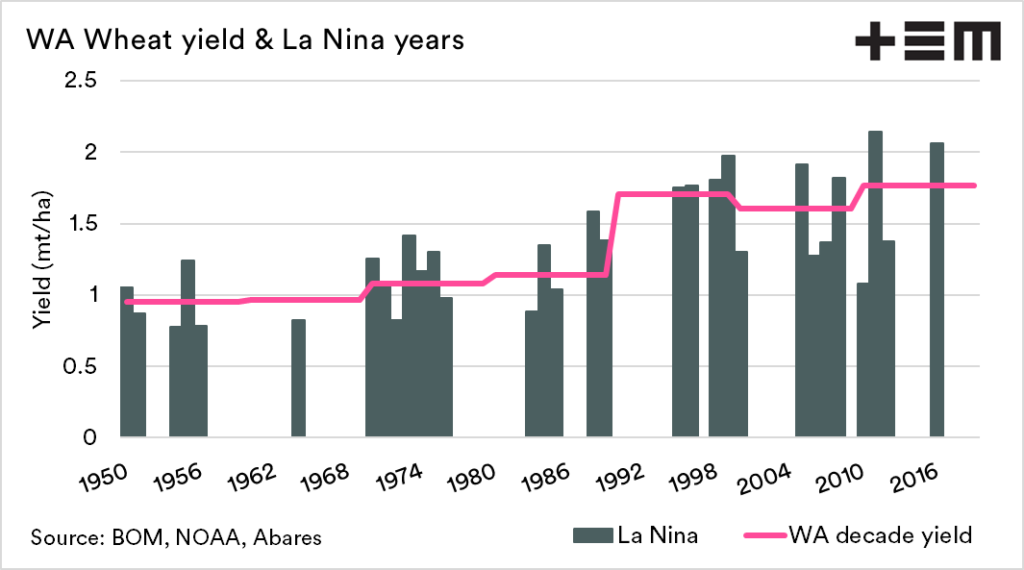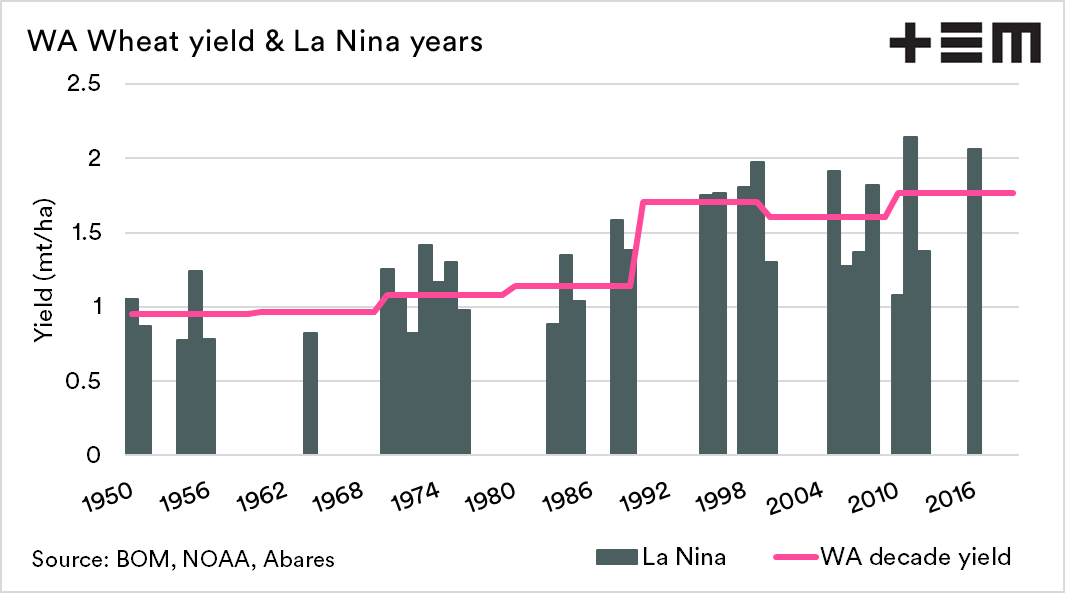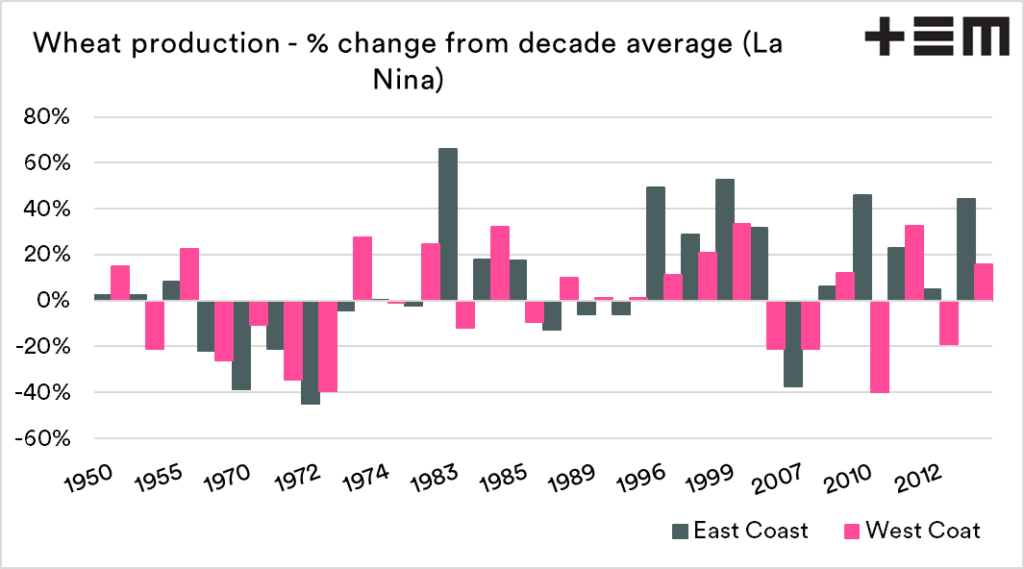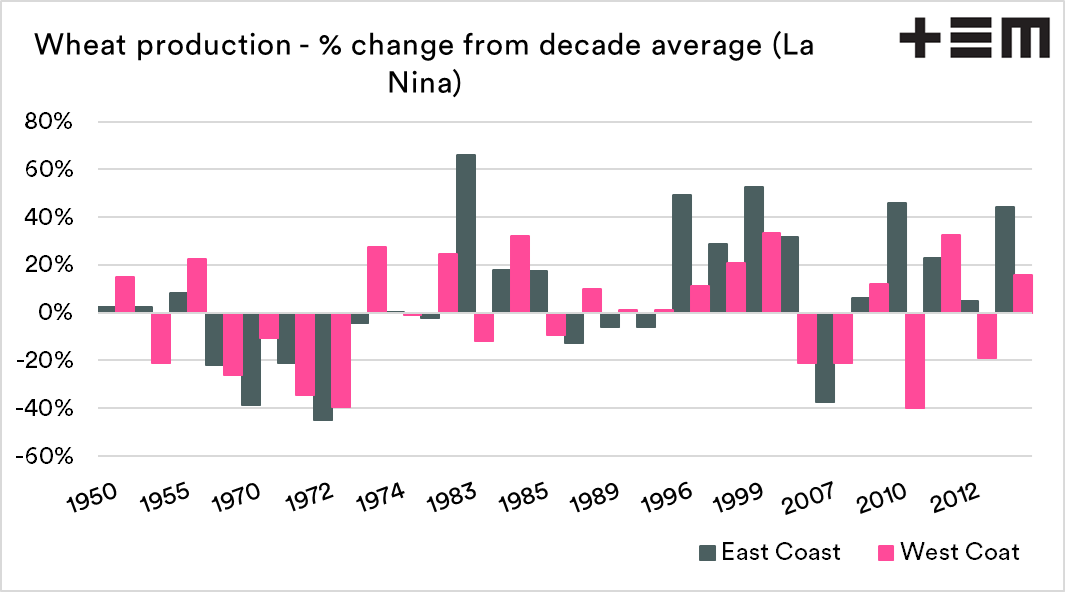Market Morsel: Don’t forget about WA

Market Morsel
We covered in mid-August the effect of La Nina on the east coast “La Nina to bring the rain?”, but we can’t forget about Australia’s biggest grain exporting state.
As outlined in this map (see here), the La Nina events have historically experienced a moistening of conditions on the east coast, but a neutral effect on the west.
The nature of a La Nina event being neither wetter nor dryer has meant that during some years yields have been both lower and higher. The first chart below displays the La Nina years against the average yield for that decade for the period 1950-present. During this period there have been some well above average yield years, conversely with some meagre years.
The second chart displays a comparison of production for the east coast states (incl SA). In years of La Nina production is much stronger on the east coast compared to the decade average than the west.
All in all, rainfall in Australia is driven by a range of factors (including the IOD). History has shown that the east coast tends to get wetter and results in productivity gains. The west coast is more complicated and is equally likely to benefit as lose due to La Nina.
One other point to consider is whether prices strengthen due to La Nina induced weather woes in the rest of the world. Luckily we have covered that as well in “La Nina- A look outside our bubble”




